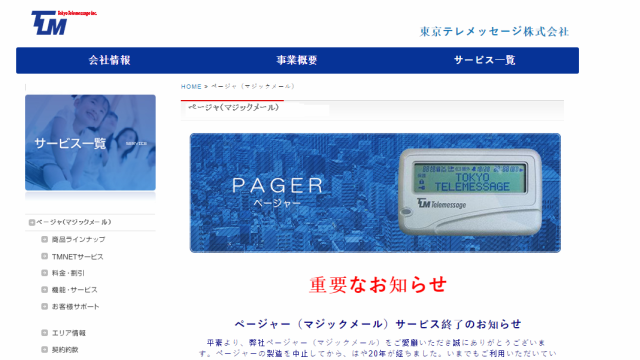The heyday of the pager is long since over, but the devices themselves have continued to be used for specialised purposes like search-and-rescue teams and emergency workers. In Japan, however, the funeral bells are officially ringing.
According to a recent report in the Japan Times, Tokyo Telemessage Inc., the last remaining pager service provider, will be cutting off the 1,500 remaining users of the devices (some of whom are workers in hospitals who use them because they don’t emit electromagnetic waves) by September 2019.
Other users of the devices may be older individuals who were reluctant to stop using the technology, according to CNN, as over 20 per cent of the Japanese population is over the age of 65. Japan is a high-tech hub, but many older devices like fax machines remain in common use — a curiosity sometimes attributed in part to conservative approaches to modernisation in its non-manufacturing sector.
The country’s top cybersecurity minister, 68-year-old Yoshitaka Sakurada, recently admitted he does not use computers under the excuse that such tasks are handled by subordinates.
As Agence France-Presse noted, some international observers were baffled to see Prime Minister Shinzo Abe learning of a North Korean missile that flew over the country via his flip phone.
The Times wrote President Hidetoshi Seino said the company will start a new radio service on the frequencies used by the devices for disaster response and relief services. The paper also recalled the heyday of the pager in Japan, which peaked in the mid-1990s and became particularly popular with high school students (specifically schoolgirls):
For example, the feature allowed users to send short numerical messages such as “0840,” which in the Japanese language can be pronounced as “ohayō” (good morning). Other messages following this pattern included “0833,” or “oyasumi” (good night) and “0906,” or “okureru” (I’ll be late).
The wireless devices were also featured in TV series and songs at the time, becoming a symbol of the age.
The number of pager service subscribers peaked at 10.61 million in 1996. But around that time use of mobile phones increased, supplanting beepers. One provider after another ended their service in the years that followed.
The last other remaining pager service providers in Japan, NTT Docomo Inc. and Okinawa Telemessage, cut off the devices in 2007 and 2017 respectively. According to CNN, Tokyo Telemessage manufactured its last pagers 20 years ago.
However, Japan is far from the only nation where pager use has lingered.
Per the BBC, one-tenth of the remaining pagers in the world (130,000) are estimated to be in use by the UK’s National Health Service for emergency purposes, which has been criticised as a waste of money at a tab of $US8.4 ($12) million annually. Just one operator, PageOne, remains operating in the UK. A 2013 report in Fortune noted that they were still somewhat common in some U.S. hospitals, as they are not affected by overloaded cell phone networks during emergencies or signal loss deep inside dense structures.
